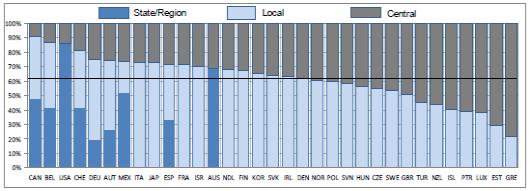Regional development
Effectiveness of Public Investment at Sub-national Level in Times of Fiscal Constraints
Objectives | Background | Sub-national capacity building | Methodology
Purpose of the case studies | Final case studies reports | Key issues | Milestones | Related info | Contact
| This project looks for solutions and good practices for improving multi-level governance of public investment, and sub-national capacities for managing such investment in a tight fiscal environment.
The objectives of the project, led by the OECD and co-financed by the European Commission, are:
|
|
Capacity development for sub-national governments to implement regional development policies represents a major challenge, not only for lagging regions, but for all OECD regions. Yet little has been done to address it until now. Sub-national capacities are often considered both as bottlenecks for making the most of regional policies and as “intended externalities” of those policies. This intended externality is sometimes considered as the most important long-term outcome of regional policy (and of cohesion policy in EU countries). Therefore, providing measures of sub-national capacities, identifying policies that strengthen them and monitoring the progress towards expected objectives are critical elements of any attempt to enhance results of regional policy in terms of economic growth, sound governance, and citizens’ well-being. Challenges in capacity building have to be analysed in correlation with the degree of autonomy that sub-national governments have in public decisions and spending; which depends on a series of factors such as their size, allocation of competences, regulation, existence of standards in public investment and services delivery. This part of the project would focus on two broad challenges:
|
|
In addition to reviews of the literature and previous analyses and surveys on the topic, the gathering of information for the two pillars of the project will be done through different channels:
|
|
|
Final case study reports are now available for the 7 case studies that were carried out:
|
|
Critical Sub-National Capacities for effective public investment
Critical co-ordination mechanisms for better multi-level governance
|
|
Questionnaires sent to countries and regions: First quarter 2012, |
|
Related OECD Documents & Publications |
|
|
Related reading |
|
|
Follow us on :
Related Documents




